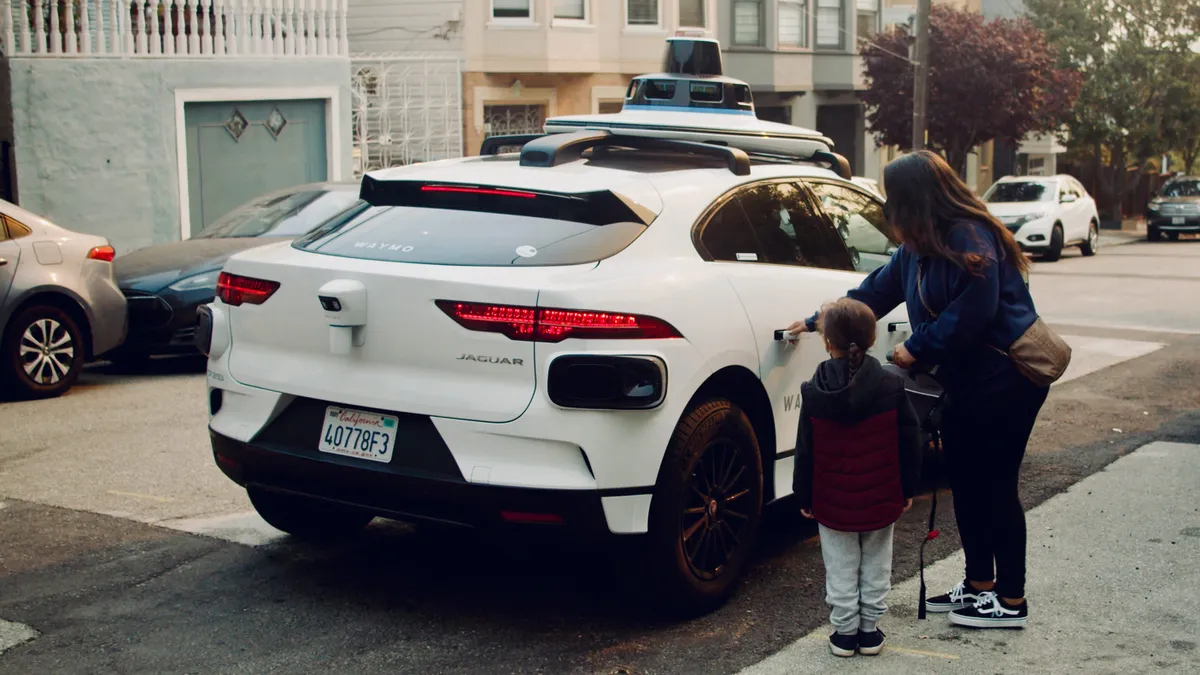Dive Brief:
- Robotaxi operations — autonomous vehicles used in ride-hailing services — are expanding in San Francisco and Phoenix and will soon launch in Dallas, Houston and Los Angeles, according to industry sources.
- Cruise, a General Motors subsidiary, and Waymo recently received approval from the California Public Utilities Commission to operate driverless ride-hail vehicles for paying passengers “throughout the city of San Francisco, at all hours of day or night.”
- Waymo also doubled its service area in the Phoenix metropolitan area in May and partnered with Uber to serve its riders and Uber Eats customers using Waymo autonomous vehicles.
Dive Insight:
Waymo states that its self-driving ride-hailing service, Waymo One, now provides more than 10,000 trips each week to public riders, while Cruise CEO and co-founder Kyle Vogt said in a May 22 tweet that the company had completed 2 million driverless miles.
But the San Francisco Municipal Transportation Agency, San Francisco County Transportation Authority and the Mayor’s Office of Disability protested Cruise’s request to expand driverless service in the city, citing previous incidents where Cruise vehicles have blocked traffic and conducted unsafe maneuvers. The California PUC rejected the city’s arguments, stating, “The technology, policies, and procedures Cruise describes are generally reasonable for its expanded service, and Cruise has demonstrated its commitment to passenger safety through its [Passenger Safety Plan].”
Cruise also operates driverless robotaxis in Austin, Texas, while Waymo said in a March press release it would begin testing in parts of Austin “over the next few months.”
Noting that “ridesharing companies have transformed the ability of minority communities to access transportation,” in a 2022 report from the technology trade group Chamber of Progress, the author, Brian Woolfolk, concluded that autonomous vehicles “should be utilized as a tool to address health disparities, food insecurities, traffic safety, job access and other social ills lingering as a result of systemic discrimination.”












